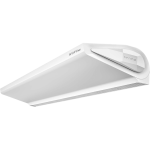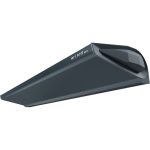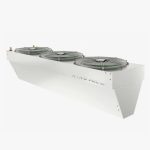At the heart of rhythm—whether in flowing water, growing ecosystems, or structured design—lies a silent conductor: the series. Series are more than abstract sequences of numbers; they are the pulse of natural order, mapping how patterns unfold, repeat, and evolve over time. From the meandering paths of fish in river networks to the cyclical growth rhythms of forests, natural series reveal an inherent logic that transcends disciplines. This convergence of mathematical precision and organic flow forms the foundation of how life organizes itself—and how human design can learn from it.
A. From Fish Road’s Flow to Design Cycles: Mapping Natural Rhythms into Rhythmic Design
The metaphor of Fish Road—a term evoking the winding, interconnected pathways shaped by aquatic life—offers a powerful lens for understanding rhythmic design. In riverine systems, fish follow routes that balance speed, energy conservation, and environmental cues, creating a dynamic flow pattern that mirrors cyclical design cycles. These natural flows are not random; they exhibit self-optimizing rhythms where peaks of activity align with seasonal changes, and lulls allow for recovery and adaptation. Designers emulate these patterns by embedding temporal layering into architecture, urban planning, and product lifecycles—ensuring systems remain responsive rather than rigid.
Biological Feedback Loops and Design Resilience
Natural series thrive on feedback: fish adjust routes based on water currents, while plant growth adapts to sunlight and soil nutrients. This responsiveness mirrors sustainable design principles, where feedback informs iterative improvement. For instance, urban green corridors modeled on Fish Road emphasize connectivity and seasonal variation, enabling biodiversity to flourish even in dense environments. Such designs foster rhythmic resilience—the ability to absorb change without losing coherence.
B. The Role of Intermittent Convergence: How Pauses and Peaks Inform Sustainable Flow
A defining feature of natural series is the interplay of peaks and pauses—a dynamic tension that prevents exhaustion and enables renewal. In fish migration, for example, periods of rapid movement are followed by stillness, allowing energy to rebuild. In design, this rhythm translates to sustainable workflows: alternating intense creative bursts with reflective breaks enhance productivity and innovation. Case studies in product development show that schedules respecting natural peaks and pauses yield higher-quality outcomes, reducing burnout and increasing adaptability.
C. Designing with Natural Cadence: Translating Biological Patterns into Adaptive Systems
Beyond replication, the true insight lies in abstraction: extracting the cadence—the timing, spacing, and flow—of natural series and embedding it into human systems. Architects use fractal-based layouts inspired by river branching to create buildings with natural ventilation and light patterns. Product designers mirror the phased growth of organisms by structuring user journeys with intuitive pacing. These applications prove that series are not just mathematical tools—they are blueprints for harmony between time, space, and life.
2. Series as Living Systems: Beyond Mathematics—Series in Ecosystems and Everyday Life
Series reveal life not as isolated events, but as interconnected processes shaped by feedback, scale, and time. Fish Road exemplifies this: as a living network, it responds to environmental shifts, demonstrating rhythmic resilience through continuous adaptation. This mirrors ecosystems worldwide, where cycles—from nutrient flows to predator-prey dynamics—maintain balance across scales.
Fractals and Feedback: From Fish Road to Human Systems
Natural series often unfold in fractal patterns—self-similar across scales. The branching of rivers echoes neural networks and vascular systems, revealing a universal logic of connectivity. This fractal logic inspires urban design: districts structured as nested hubs, each supporting local life while linking to larger systems. In product lifecycles, modular designs reflect natural series by enabling incremental growth, repairability, and evolution—mirroring how organisms regenerate and adapt.
Adaptation Through Change: Lessons from Nature’s Series
Unlike static models, natural series evolve. Fish adjust routes seasonally; forests regenerate after fire; cities reconfigure in response to climate. These adaptive rhythms teach us that sustainability requires flexible design—systems built not to resist change, but to flow with it. Designers who embed this principle create resilient infrastructure, products, and communities that thrive amid uncertainty.
3. Rhythmic Resilience: How Natural Series Adapt to Change, Offering Models for Design Flexibility
The convergence of natural series and human design finds its power in resilience. Fish Road’s fluidity teaches that stability does not mean rigidity—dynamic systems balance structure with responsiveness. In design, this translates to spaces that shift with use, materials that age gracefully, and digital interfaces that adapt to user behavior. Research in biomimicry confirms that systems modeled on nature’s series exhibit higher longevity and lower resource consumption.
Case Study: Sustainable Architecture Inspired by Fluid Patterns
A notable example is the Eden Project in Cornwall, where biomes replicate natural closed ecosystems. Their geodesic domes follow fractal branching patterns, optimizing light and airflow while supporting diverse plant life. This design mirrors Fish Road’s efficiency—maximizing resource use within a self-sustaining rhythm. Data from the project show energy savings of up to 30% compared to conventional greenhouses, proving that nature’s sequences yield measurable sustainability gains.
Urban Planning and Temporal Layering
Cities too follow series: daily commutes peak, weekly markets pulse, annual festivals pulse through time. Urban planners increasingly adopt temporal layering—designing districts with zones that activate rhythmically across time scales. For instance, Copenhagen’s waterfront integrates morning cycling paths, afternoon public plazas, and evening cultural hubs, embodying Fish Road’s multi-tempo flow. Such layered design fosters vibrant, resilient communities where rhythm supports both function and well-being.
4. Bridging Abstract Series to Tangible Experience: From Theory to Lived Rhythm
Translating series from abstract math to lived experience demands intentionality. Designers must ask: How does a rhythm feel? When does a peak energize? When does a pause restore? In product design, user journeys mapped to natural series reduce cognitive load—think of app navigation that mirrors the ebb and flow of a river’s current. In interior spaces, lighting sequences echo sunrise and sunset, guiding mood through time. The rhythmic wisdom of series thus becomes a tool for empathy, shaping environments that resonate with human tempo.
The Aesthetic of Convergence in Design
The aesthetic of convergence—where patterns align in space and time—emerges as a signature of rhythm-based design. This is visible in the spatial harmony of traditional Japanese temples, where wooden structures follow natural flow patterns, or in modern offices with open layouts that echo ecological connectivity. These designs don’t impose order; they reveal it, letting rhythm guide perception and behavior.
Temporal Layering in Multisensory Environments
Multisensory design deepens rhythm by engaging sight, sound, touch across time. A public square might begin with morning light patterns, shift to midday activity, and conclude with evening soundscapes—each phase a natural series. Research in environmental psychology shows such layered rhythms reduce stress and enhance belonging, proving that rhythm, when thoughtfully layered, shapes human experience profoundly.
Designing Rhythm: Translating Series into Spatial and Temporal Harmony
With nature as inspiration, designers now translate series into tangible harmony—shaping both space and time. In architecture, parametric modeling allows forms to emerge from dynamic sequences, mimicking natural branching and fractals. Products evolve through modular series, enabling customization and longevity. Urban grids integrate temporal rhythms, aligning infrastructure with biological and social cycles.
The Aesthetic of Convergence: Using Series to Shape Flow in Architecture, Product, and Urban Design
The aesthetic of convergence transforms static objects into living systems. Consider the Louvre Abu Dhabi’s dome: its intricate lattice pattern, inspired by traditional Islamic geometry, diffuses light in a dynamic, ever-shifting rhythm—echoing the flowing patterns of Fish Road beneath. Similarly, modular furniture systems adapt through series-based configurations, responding to changing needs without waste. These designs embody rhythm not as decoration, but as function.
Temporal Layering Across Multiple Time Scales in Multisensory Environments
Effective design embraces multiple time scales: micro (instant), meso (daily), macro (seasonal). At the Tokyo Waterfront, for example, kinetic sculptures respond to tidal rhythms hourly, while seasonal plantings shift color and texture annually—creating a layered experience that mirrors natural series. This temporal depth invites ongoing engagement, turning spaces into living chronicles of time and change.
Case Studies: How Series Principles Inspire Sustainable and Human-Centered Design Practices
Real-world applications prove series-based design drives sustainability and human well-being. The Bosco Verticale in Milan integrates tree species following ecological succession series, enhancing biodiversity and air



 AC серия
AC серия
 Электрические тепловые завесы Wing White Белые
Электрические тепловые завесы Wing White Белые Водяные тепловые завесы WING White Белые
Водяные тепловые завесы WING White Белые Тепловые завесы Wing Dark Черные
Тепловые завесы Wing Dark Черные Wing PRO тепловые завесы
Wing PRO тепловые завесы